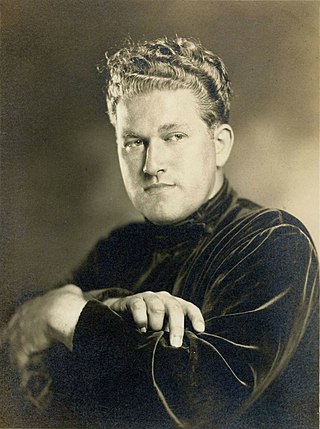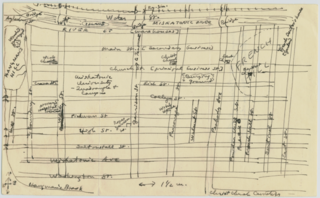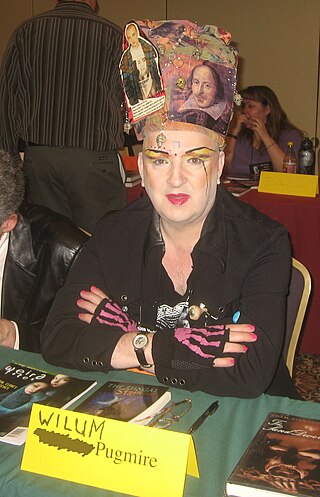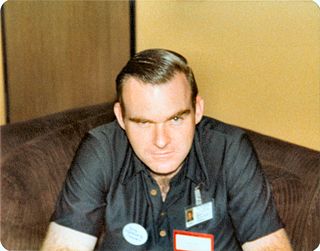External links
- The H. P. Lovecraft Archive
- The H. P. Lovecraft Historical Society
- Lovecraft Annual
- Lovecraft Studies
- Crypt of Cthulhu
Lovecraft studies is the body of research that has emerged surrounding the works of H. P. Lovecraft. It began with the dissemination of Lovecraft's works by Arkham House during the decades after his death. The scholars in the field sought to establish Lovecraft as a major author of American speculative fiction during its foundational period in the 1970s. After the death of August Derleth, the founder of Arkham House, the field shifted in a direction away from the one that he promoted. L. Sprague de Camp's biography of Lovecraft emerged during this time. While criticized by portions of the fans and scholarship, it played a significant role in his literary rise. During the late 1970s and early 1980s, the scholars were split between traditionalist who supported Derleth's positions on Lovecraft and those who did not. The 1980s and 1990s featured an expansion of the field, including the H. P. Lovecraft Centennial Conference. Memorials to Lovecraft began to appear in his home city of Providence, Rhode Island and his works began to be published by Penguin Classics. S. T. Joshi, a major figure in the field, wrote a biography of Lovecraft that superseded de Camp's work. In 2008, the Library of America, published a volume of Lovecraft's works that solidified the perception that H. P. Lovecraft was now part of the western canon. The NecronomiCon Providence, a biannual scholarly and fan conference managed by the Lovecraft Arts and Sciences organization, began to be held in 2013.
Starting in the early 1970s, a body of scholarly work began to emerge around H. P. Lovecraft's life and works. Referred to as Lovecraft studies, its proponents sought to establish Lovecraft as a significant author in the American literary canon. This can be traced to August Derleth's preservation and dissemination of Lovecraft's fiction, non-fiction, and letters through Arkham House. S. T. Joshi, a major scholar, credits the development of the field to this process. However, it was marred by low quality editions and misinterpretations of Lovecraft's worldview. For example, Derleth incorrectly argued that there was a dichotomy between the good "Elder Gods" and the evil "Old Ones" in Lovecraft's fiction, the expulsion of these Old Ones paralleled Christian theology, the beings in the stories were elementals, and Lovecraft's stories could be clearly divided into sets. [1] Fritz Leiber, Matthew H. Onderdonk, and George T. Wetzel were among the early critics who were active during and before the 1970s. Their primary actions as critics was to oppose the statements of negative critics, including Edmund Wilson. [2] After Derleth's death in 1971, the scholarship entered a new phase. There was a push to create a book-length biography of Lovecraft. L. Sprague de Camp, a science fiction scholar, wrote the first major one in 1975. This biography was criticized by early Lovecraft scholars for its lack of scholarly merit and its lack of sympathy for its subject. Frank Belknap Long, one of Lovecraft's friends and correspondents, wrote his own book in an attempt to counteract the effects of this biography. Despite the criticism, de Camp's biography played a significant role in Lovecraft's literary rise. It exposed Lovecraft to the mainstream of American literary criticism. [3]
During the late 1970s and early 1980s, there was a division in the field between the "Derlethian traditionalists" who wished to interpret Lovecraft through the lens of fantasy literature and the newer scholars who wished to place greater attention on the entirety of his corpus. [4] This process was begun by Richard L. Tierney, who challenged August Derleth's interpretation of Lovecraft's fiction in a 1972 paper titled "The Derleth Mythos". [5] Dirk W. Mosig furthered this line of thought and Derleth's interpretation ceased to be mainstream amongst the scholars. [1] The first Lovecraftian scholarly journal, Lovecraft Studies, began to be published in 1979. It served as the main outlet for scholarship in the field and was edited by S. T. Joshi. [6] The 1980s and 1990s saw a further proliferation of the field. This period saw the rise of the "Providence Pals", a group of scholarly fans who were the central figures in the field during those decades. They included S. T. Joshi, Donald R. Burleson, Robert M. Price, and Peter Cannon. These scholars contributed to various advancements in the field, including the publication of corrected versions of H. P. Lovecraft's stories, essays, and writings. [7] Price began to publish his own scholarly fanzine, Crypt of Cthulhu in 1981. It publishes both scholarship and fiction. [8] The 1990 H. P. Lovecraft Centennial Conference and the republication of older essays in An Epicure in the Terrible served as bases for then-future studies. The 1990 centennial also saw the installation of the "H. P. Lovecraft Memorial Plaque" in a garden adjoining John Hay Library, that features a portrait by silhouettist E. J. Perry. [9] Following this, in 1996, S. T. Joshi wrote his own biography of Lovecraft. This biography was met with positive reviews and became the main biography in the field. It has since been superseded by his expanded edition of the book, I am Providence in 2010. [10]
Lovecraft's improving literary reputation has caused his works to receive increased attention by both classics publishers and scholarly fans. [11] His works have been published by several different series of literary classics. Penguin Classics published three volumes of Lovecraft's works between 1999 and 2004. These volumes were edited by S. T. Joshi. [11] Barnes & Noble would publish their own volume of Lovecraft's complete fiction in 2008. The Library of America published a volume of Lovecraft's works in 2005. The publishing of these volumes represented a reversal of the traditional judgment that Lovecraft was not part of the Western canon. [12] Lovecraft Studies experienced a hiatus in 2006 and was replaced by the Lovecraft Annual a year later. [8] Meanwhile, the biannual NecronomiCon Providence convention was first held in 2013. Its purpose is to serve as a fan and scholarly convention that discusses both Lovecraft and the wider field of weird fiction. It is organized by the Lovecraft Arts and Sciences organization and is held on the weekend of Lovecraft's birth. [13] That July, the Providence City Council designated the "H. P. Lovecraft Memorial Square" and installed a commemorative sign at the intersection of Angell and Prospect streets, near the author's former residences. [14]

August William Derleth was an American writer and anthologist. He was the first book publisher of the writings of H. P. Lovecraft. He made contributions to the Cthulhu Mythos and the cosmic horror genre and helped found the publisher Arkham House. Derleth was also a leading American regional writer of his day, as well as prolific in several other genres, including historical fiction, poetry, detective fiction, science fiction, and biography. Notably, he created the fictional detective Solar Pons, a pastiche of Arthur Conan Doyle's Sherlock Holmes.

The Cthulhu Mythos is a mythopoeia and a shared fictional universe, originating in the works of American horror writer H. P. Lovecraft. The term was coined by August Derleth, a contemporary correspondent and protégé of Lovecraft, to identify the settings, tropes, and lore that were employed by Lovecraft and his literary successors. The name "Cthulhu" derives from the central creature in Lovecraft's seminal short story "The Call of Cthulhu", first published in the pulp magazine Weird Tales in 1928.

Howard Phillips Lovecraft was an American writer of weird, science, fantasy, and horror fiction. He is best known for his creation of the Cthulhu Mythos.

The Necronomicon, also referred to as the Book of the Dead, or under a purported original Arabic title of Kitab al-Azif, is a fictional grimoire appearing in stories by the horror writer H. P. Lovecraft and his followers. It was first mentioned in Lovecraft's 1924 short story "The Hound", written in 1922, though its purported author, the "Mad Arab" Abdul Alhazred, had been quoted a year earlier in Lovecraft's "The Nameless City". Among other things, the work contains an account of the Old Ones, their history, and the means for summoning them.

Cthulhu is a cosmic entity created by writer H. P. Lovecraft. It was introduced in his short story "The Call of Cthulhu", published by the American pulp magazine Weird Tales in 1928. Considered a Great Old One within the pantheon of Lovecraftian cosmic entities, this creature has since been featured in numerous popular culture references. Lovecraft depicts it as a gigantic entity worshipped by cultists, in the shape of a green octopus, dragon, and a caricature of human form. The Lovecraft-inspired universe, the Cthulhu Mythos, where it exists with its fellow entities, is named after it.

Arkham is a fictional city situated in Massachusetts. An integral part of the Lovecraft Country setting created by H. P. Lovecraft, Arkham is featured in many of his stories and those of other Cthulhu Mythos writers.

At the Mountains of Madness is a science fiction-horror novella by American author H. P. Lovecraft, written in February/March 1931. Rejected that year by Weird Tales editor Farnsworth Wright on the grounds of its length, it was originally serialized in the February, March, and April 1936 issues of Astounding Stories. It has been reproduced in numerous collections.

Sunand Tryambak Joshi is an American literary critic whose work has largely focused on weird and fantastic fiction, especially the life and work of H. P. Lovecraft and associated writers.

Lovecraft Country is a term coined for the New England setting used by H. P. Lovecraft in many of his weird fiction stories, which combines real and fictitious locations. This setting has been elaborated on by other writers working in the Cthulhu Mythos. The phrase was not in use during Lovecraft's own lifetime; it was coined by Keith Herber for the Lovecraftian role-playing game Call of Cthulhu.

Lovecraftian horror, also called cosmic horror or eldritch horror, is a subgenre of horror fiction and weird fiction that emphasizes the horror of the unknowable and incomprehensible more than gore or other elements of shock. It is named after American author H. P. Lovecraft (1890–1937). His work emphasizes themes of cosmic dread, forbidden and dangerous knowledge, madness, non-human influences on humanity, religion and superstition, fate and inevitability, and the risks associated with scientific discoveries, which are now associated with Lovecraftian horror as a subgenre. The cosmic themes of Lovecraftian horror can also be found in other media, notably horror films, horror games, and comics.

Hippocampus Press is an American publisher that specializes in "the works of H. P. Lovecraft and his literary circle". Founded in 1999 and based in New York City, Hippocampus is operated by founder Derrick Hussey.
Necronomicon Press is an American small press publishing house specializing in fiction, poetry and literary criticism relating to the horror and fantasy genres. It is run by Marc A. Michaud.

Wilum Hopfrog Pugmire, was a writer of weird fiction and horror fiction based in Seattle, Washington. His works typically were published as W. H. Pugmire and his fiction often paid homage to the lore of Lovecraftian horror. Lovecraft scholar and biographer S. T. Joshi described Pugmire as "the prose-poet of the horror/fantasy field; he may be the best prose-poet we have" and as one of the genre's leading Lovecraftian authors.
Robert Hayward Barlow was an American author, avant-garde poet, anthropologist and historian of early Mexico, and expert in the Nahuatl language. He was a correspondent and friend of horror writer H. P. Lovecraft, who appointed Barlow as the executor of his literary estate.

Yōzan Dirk W. Mosig is a psychologist, historian, literary critic and ordained Zen monk noted for his critical work on H. P. Lovecraft. He was born in Germany and lived for several years in Argentina before emigrating to the United States. He received his Ph.D at the University of Florida in 1974.

Joseph Vernon Shea (1912–1981) was an American writer of horror, fantasy, poetry, and essays; and a correspondent of H. P. Lovecraft, Clark Ashton Smith, and August Derleth.
The NecronomiCon Providence, also known as the NecronomiCon Providence: The International Conference and Festival of Weird Fiction, Art, and Academia, is a biennial convention and academic conference held in Providence, Rhode Island. It explores the life and works of H. P. Lovecraft and other creators of weird fiction, film, and art of the past and the present. Originally billed as "the largest celebration ever of [Lovecraft's] work and influence", it has broadened its scope to examining and celebrating weird creative efforts internationally. The event is typically held on the weekend closest to Lovecraft's birthday of August 20th.
Ann K. Schwader is an American poet and writer of short fiction based in Westminster, Colorado. Schwader is a grand master of the Science Fiction & Fantasy Poetry Association, a multiple winner of the Rhysling Awards, and has been called one of the "top poets" in the speculative poetry genre.

Duane Weldon Rimel was an American writer of speculative and erotic literature who is best known for his friendship with H. P. Lovecraft.
The Lovecraft fandom, Lovecraftian fandom or Cthulhu Mythos fandom is an international, informal community of fans of the works H. P. Lovecraft, especially of the Cthulhu Mythos and the Lovecraftian horror.